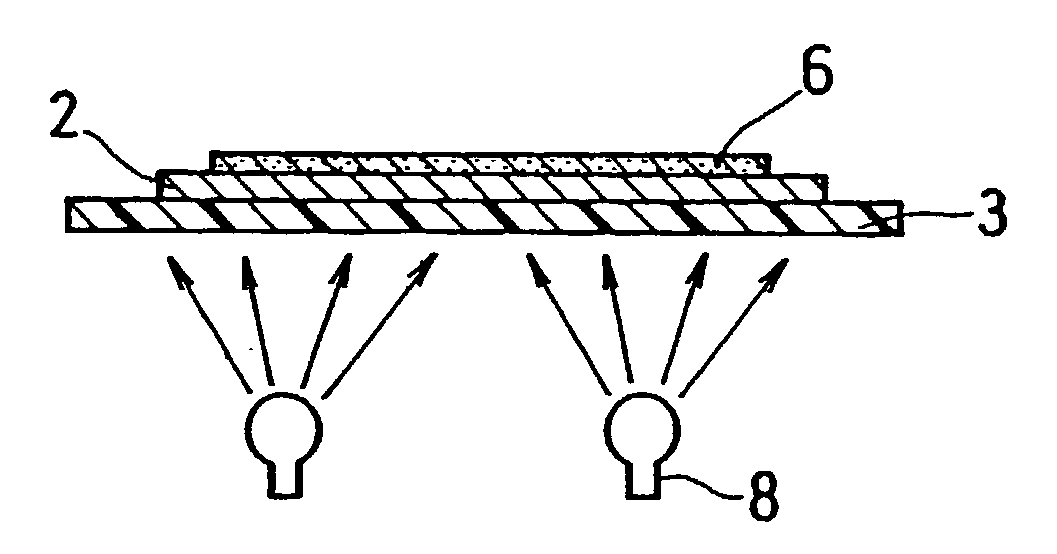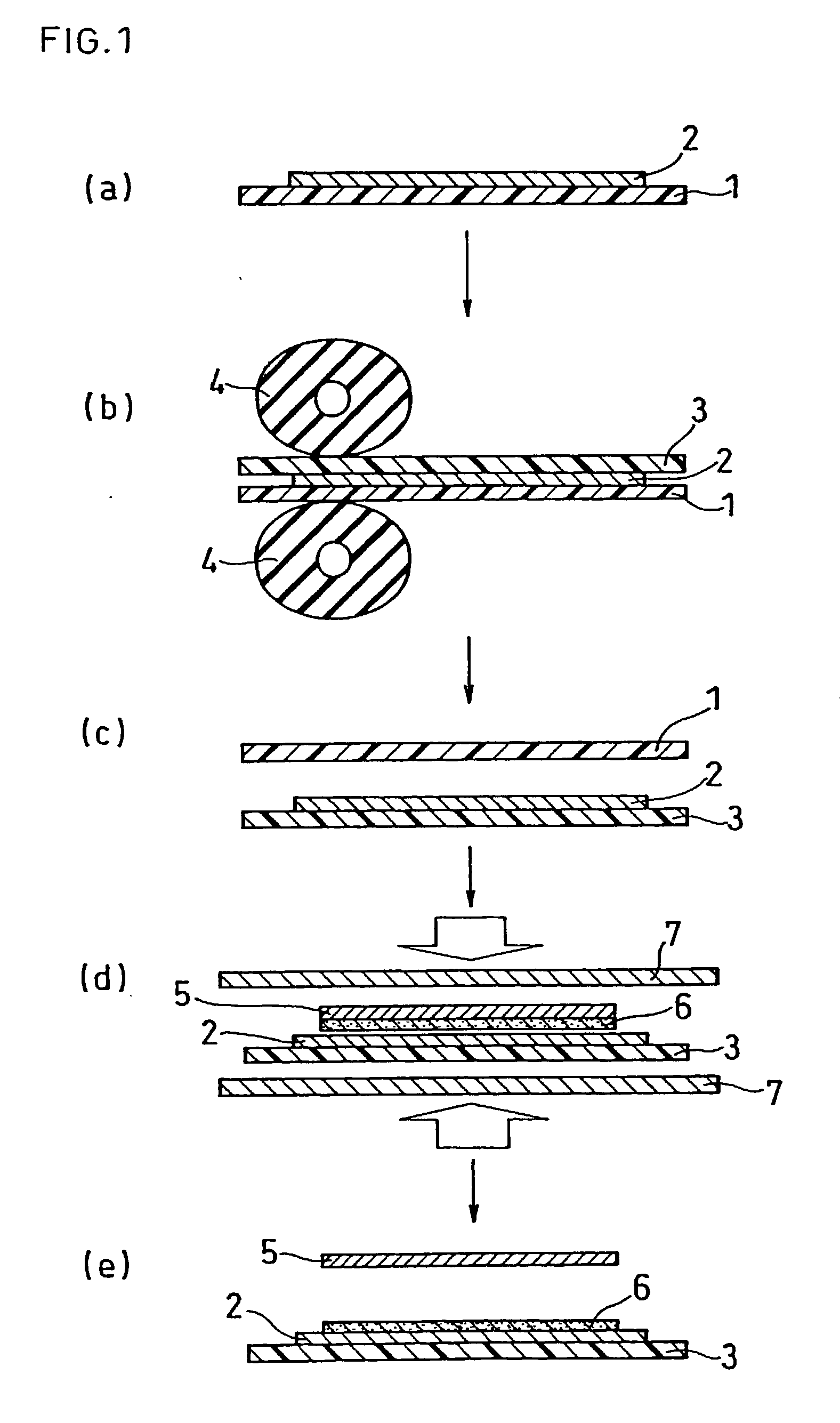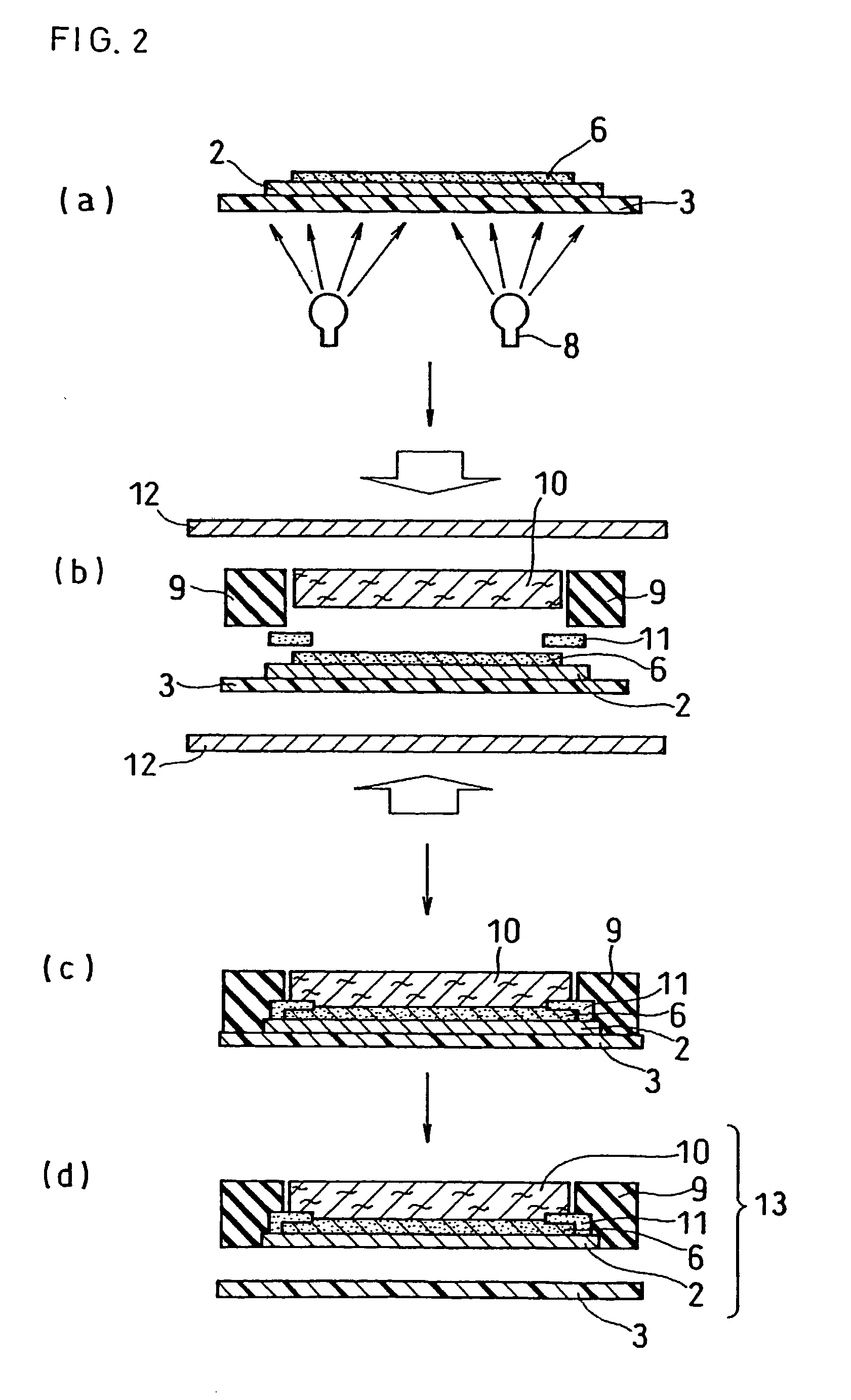Method for manufacturing fuel cell elecrolyte film-electrode bond
a technology of electrolyte film and electrolyte, which is applied in the direction of cell components, sustainable manufacturing/processing, and final product manufacturing, etc., can solve the problems of easy breakage and cracking, the membrane is more fragile and breakable, and it is extremely difficult to produce the electrolyte membrane-electrode assembly without breakage of the electrolyte membrane, etc., to achieve sufficient suppression of the flow out
- Summary
- Abstract
- Description
- Claims
- Application Information
AI Technical Summary
Benefits of technology
Problems solved by technology
Method used
Image
Examples
example 2
[0173] The same electrolyte solution as that in Example 1 was applied onto the same base material for the electrolyte membrane as that in Example 1 with the use of a coater, which was heated and dried with an infrared ray heater to form the electrolyte membrane 2 with a film thickness of 6 .mu.m directly on the base material. Except the above, an electrolyte membrane-electrode assembly and a PEFC were produced in the same manner as in Example 1, to be evaluated.
[0174] As a result of the depressurization test on the electrolyte membrane-electrode assembly, it was confirmed that the air having been caught between the electrolyte membranes was removed in the depressurized container and air bubbles disappeared. Further, in the successive power generation test on the PEFC using this electrolyte membrane-electrode assembly, a high discharge voltage of about 0.7 V per a unit cell was obtained, as in Example 1.
example 3
[0176] FIG. 7 schematically shows a production process of the electrolyte membrane-electrode assembly in accordance with the present example.
[0177] First, for obtaining a catalyst layer 103, a carbon powder carrying from 10 to 30 wt % of a platinum catalyst thereon was mixed with N-butyl acetate such that the weight ratio of above platinum and N-butyl acetate was 1:120, to obtain a dispersion of the platinum catalyst. While the dispersion was stirred with a magnetic stirrer, an ethyl alcohol solution of the polymer electrolyte was added dropwise until the amount ratio of the platinum and the polymer electrolyte became 1:2, which was then made to give a paste with the use of an ultrasonic dispersion machine. As for the ethyl alcohol solution of the polymer electrolyte, the Flemion FSS-1 solution produced by Asahi Glass Co.,Ltd. was used.
[0178] This catalyst paste was applied onto one face of carbon paper as a base material 104 produced by Toray Industries, Inc. with a size of 100 mm....
example 4
[0191] FIG. 8 schematically shows a production process of an electrolyte membrane-electrode assembly for a fuel cell in accordance with the present invention.
[0192] First, a gas diffusion electrode with the catalyst layer 103 was obtained in the same manner as in Example 3. Next, an aqueous solution with a concentration of 1% of hydroxypropyl methylcellulose (60SH4000 produced by Shin-Etsu Chemical Co.,Ltd.) was dropped onto a glass plate to be developed by the casting method, followed by drying, to obtain a film 122.
[0193] After the Flemion FSS-1 solution as the polymer electrolyte was applied onto the film 122 by the roll coater method, an ethyl alcohol component was removed to obtain a film with the polymer electrolyte layer as in FIG. 8(a). At this time, the polymer electrolyte layer had a thickness of 12 .mu.m.
[0194] Next, as shown in FIG. 8(b), this film with the polymer electrolyte layer was laminated with the above-produced gas diffusion electrode with the catalyst layer 103...
PUM
| Property | Measurement | Unit |
|---|---|---|
| Force | aaaaa | aaaaa |
| Adhesion strength | aaaaa | aaaaa |
| Electrical conductor | aaaaa | aaaaa |
Abstract
Description
Claims
Application Information
 Login to View More
Login to View More - R&D
- Intellectual Property
- Life Sciences
- Materials
- Tech Scout
- Unparalleled Data Quality
- Higher Quality Content
- 60% Fewer Hallucinations
Browse by: Latest US Patents, China's latest patents, Technical Efficacy Thesaurus, Application Domain, Technology Topic, Popular Technical Reports.
© 2025 PatSnap. All rights reserved.Legal|Privacy policy|Modern Slavery Act Transparency Statement|Sitemap|About US| Contact US: help@patsnap.com



